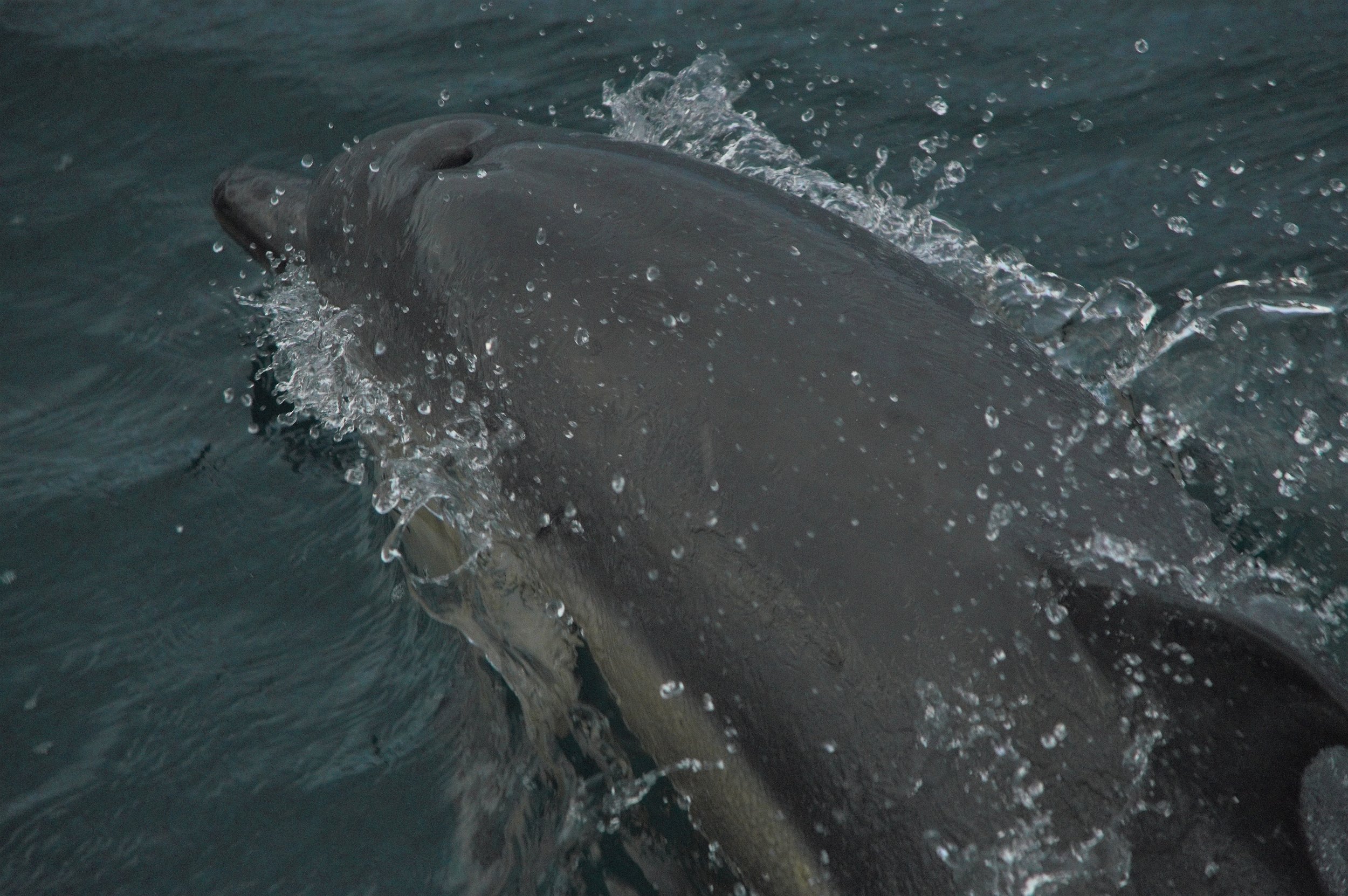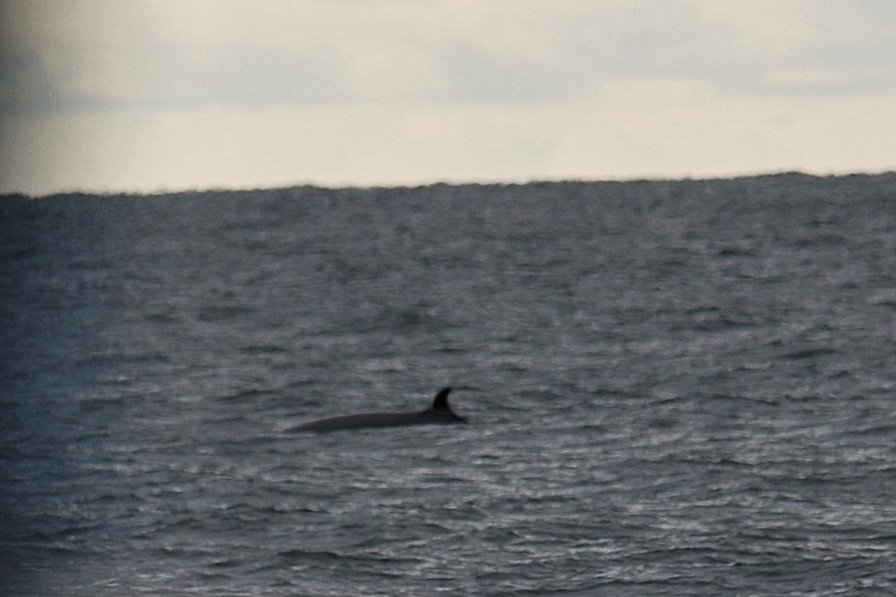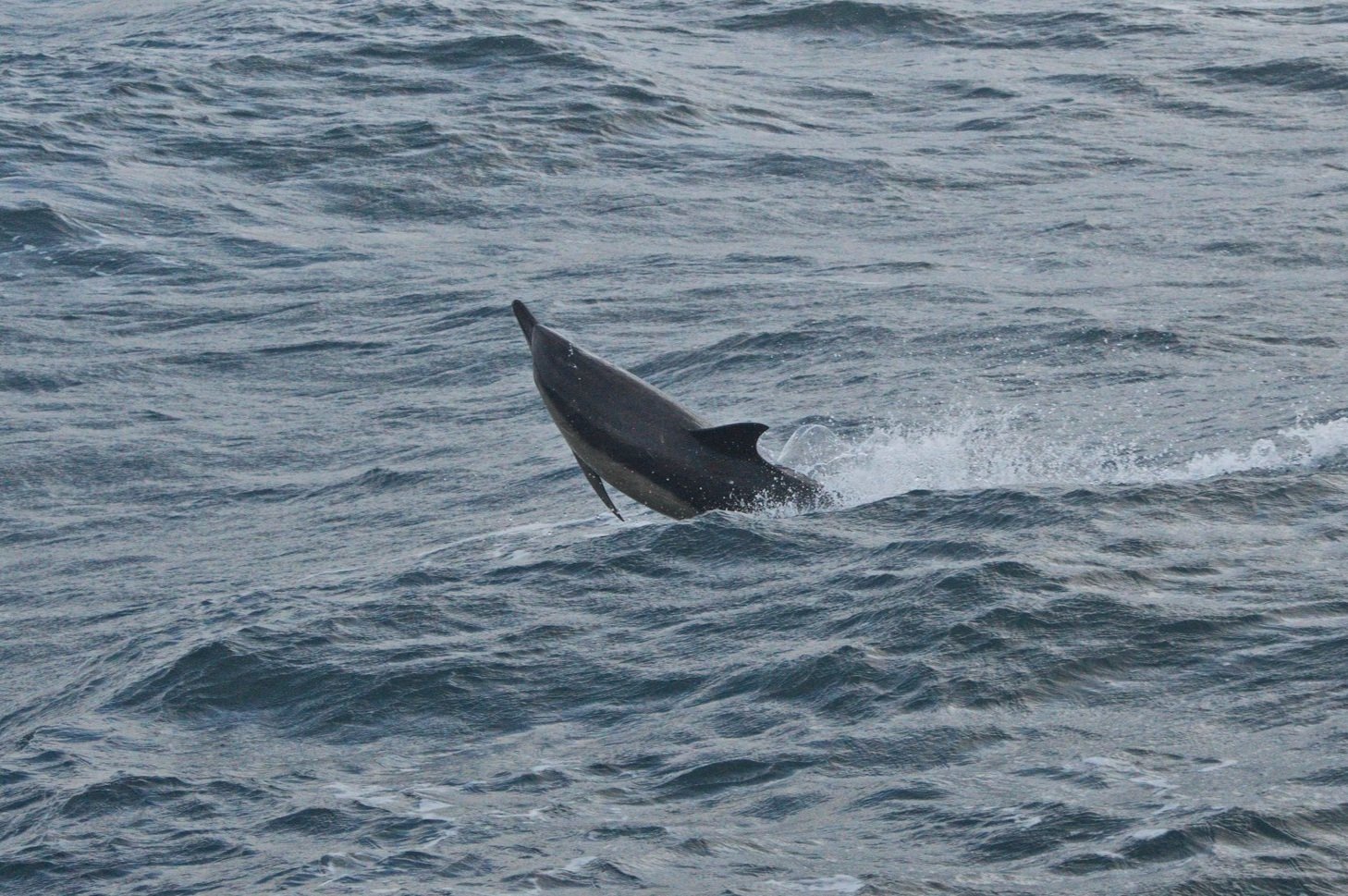'Seasonal Visitors' Encountered on the First Winter Expedition of the Season
OUR RESEARCH VESSEL, SILURIAN, SET OFF FOR THE FIRST WINTER EXPEDITIONS OF THE YEAR, ENCOUNTERING DOLPHINS AND WHALES ALONG THE WAY! CRAIG MACKIE, THE DATA OFFICER ONBOARD THIS EXPEDITION, TELLS US MORE…
Having spent a few years volunteering with the Trust in various aspects of the work they do, I was hugely excited to set off on my first trip as a full member of the Silurian crew where I would act as Data Officer. It had been a few years since I had sailed on Silurian and after training with Science Officer, Becky, I was eager to get out onto the water and explore the Hebrides.
With the weather looking to worsen over the week we decided to make the most of some favourable light winds over the first two days, heading out into the Sea of the Hebrides. We heard the first dolphin whistles over the hydrophones within the first hour of setting out. Shortly followed by the first sighting of the trip as a pod of around eight common dolphins played merrily around the boat, bow-riding and leaping across the water alongside.
With spirits high after a great start, we began to round Ardnamurchan Point where the waves crashed against the rocks below the lighthouse. Out in open water, our skipper, Brian, began to give the crew a refresher in some of the safety protocols onboard when he was interrupted by a minke whale popping up right behind him! Excitedly we changed course to get photos of the animal for identification purposes. However, the whale proved elusive and disappeared after only a few rises, quickly replaced with another small pod of dolphins.
The rest of the day continued in the same manner, with almost all of the listening stations we conducted (we slow down every 15 minutes to assess the ocean soundscape) yielding dolphin whistles. More pods of dolphins joined us for short periods of the journey as we sailed northwest towards Canna, before they swam off into the ocean waves. We finally anchored in the last of the light after a very successful and eventful first day.
The Isle of Canna - what a view to wake up to
We woke to glorious sunshine peeking over the cliffs of Rhum and eagles circling over the cliffs of Canna. After some initial issues with the steering - which was quickly fixed by the Skipper, Brian and First Mate, Jake - we were back up and running. We set off round the northwest of Canna and then south around Hyskier lighthouse, before turning back towards Tobermory where we would need to get some shelter from the stormy weather that was due to come. The dolphins were still very active on the hydrophone, but the slightly poorer weather conditions made them harder to spot. It was just northwest of Coll before we got our first sighting. Several groups joined us until we got to the east of the Cairns of Coll. These would be the last sightings of the day, although we were still hearing lots of whistles over the hydrophones all the way into Tobermory.
Skipper, Brian, and First Mate, Jake, quickly resolved the steering issues
The third day was spent in Tobermory as the weather was too poor for surveying, offering a chance to give the boat a little TLC and plan the next few days of surveying.
With the strong winds set to continue, we decided to head east into slightly more sheltered waters to survey the Firth of Lorne and Loch Linnhe. We started south down the Sound of Mull and the sightings dropped in frequency, with the conditions being less than perfect. Only one porpoise was seen, although others were picked up on the hydrophone. We then sailed out into the Firth of Lorne before retreating to the shelter of Loch Spelve, on the south eastern side of Mull.
The next morning started on a positive note, with several more eagles surrounding the boat on the way out of the loch! We then headed south towards the northern tip of Colonsay, before turning northeast and anchoring near Ardencaple, on the northern tip of the Isle of Seil. The following day we sailed northwards up the eastern side of Lismore and into Loch Linnhe, towards Ballachulish..
Eagles joined the crew as Silurian left Loch Spelve
The weather finally(!) relented on the last day of the expedition as we travelled home, down the western side of Lismore and back up the Sound of Mull - with many porpoises clicking on the hydrophones and one surfacing several times near the boat.
All in all, the expedition was an incredible experience even with some of the rougher conditions we faced, I thoroughly enjoyed my first taste as Science Officer on board. In total we surveyed over 280 miles, collecting over 39 hours of acoustic recordings. We also encountered four different species of marine mammal including harbour porpoises, common dolphins, minke whales and common seals. It was a great start to the winter data collection and I am looking forward to future trips!
Track lines showing the area covered by this first winter survey
We’d like to thank Nature Scot for funding the winter programme of survey work, this crucial data collection will allow us to deepen our understanding of the Hebridean marine environment year-round.









